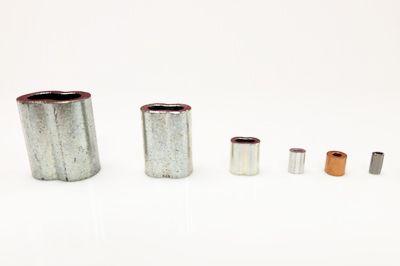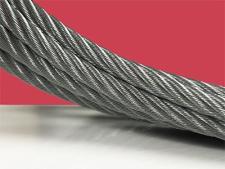Cable crimp sleeves are among the most commonly used wire rope and mechanical cable fittings. Also, but lesser known as loop sleeves, cable crimp sleeves are popular because they are designed to serve two fundamental cable assembly functions: form a loop at one or both ends of a length of cable, and/or attach two separate pieces of cable together.
However, for all their popularity, cable crimp sleeves come in many geometries, sizes and materials, and also may interact with mating components differently from one application and geometry to the next. Getting the material right, but fitting size wrong for example may contribute to the cable assembly failing to hold the designated load without premature failure.
Therefore, using crimp sleeves in even the simplest cable assemblies is a matter of careful scrutiny of the system and application the cable assembly will reside within, along with a host of other mission-critical assembly design considerations.
Browse Our Entire Selection of Cable Crimp Sleeves
Cable Crimp Sleeve Geometries
Cable Crimp sleeves can come in geometries such as cylindrical, figure-8, or ovular, and are applied to cable with either a hand tool or industrial press to create, as discussed, a loop or pair two cables together.
In crimp sleeves designed for smaller cable, such as .006” cable, they are made from a small, sectioned piece of stainless steel or brass tubing that is swaged or pressed to the cable. In the case of a miniature, brass crimp sleeve, one can even attach the fitting to cable using a household pair of pliers.
But no matter the size of the cable crimp sleeve fitting, depending upon the load the cable assembly must support, the repeatability of the assembly’s production run must be considered a critical design factor of safety.
For example, a hand tool, such as garden-variety pliers, may be adequate to test a single part or validate a small number of crimp sleeve cable assemblies. However, using one’s hand to press the crimp sleeve to the cable assembly introduces variability to the forces being applied to the fitting. After all, an engineer’s hand is never going to replicate the reliability to which an industrial press would apply a crimp sleeve to a cable.
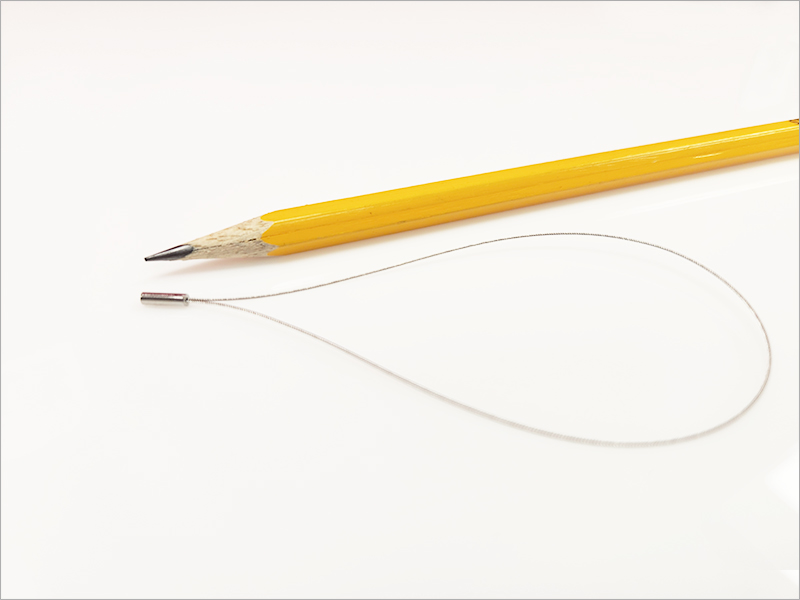

And even setting aside the engineer’s hand strength, this manufacturing process, though perhaps suited to small prototyping runs, would also depend on the same hand applying the same forces for as many pieces as needs to be produced. Therefore, Steve’s hand strength, for instance, can, will and does vary, as compared with his colleagues, were someone other than Steve to attach crimp sleeve fittings to cable.
Just like smaller diameter cable crimp sleeves, mid-sized crimp sleeve fittings are also made of tubing - perfectly round in nature. But, unlike crimp sleeves meant for miniature cable, these larger fittings are pressed into an ovular shape, allowing for the molded, cable-shaped space to accommodate a single cable to pass through the fitting twice, or to allow two cables to be joined. In even larger crimp sleeves, the fitting’s material is formed into a figure-8. Like the ovular crimp sleeve, a figure-8 shape allows two ends or two cables to make ergonomic contact with one another. But unlike ovular alternatives, the figure-8 design ensures more points of contact for the crimp fitting to make with the cable. This increase in points of contact is attributable to the wrapping-like behavior of the fitting’s geometry. In the ovular crimp sleeve, the fitting is pressed around the cable, while in a figure-8 crimp sleeve, the fitting almost hugs the cable when it’s pressed. Thus, by virtue of the constructional bend in each loop of the figure-8, this configuration allows the cable to be better mated to the fitting, which ensures the cable assembly achieves and maintains its full-rated break strength.
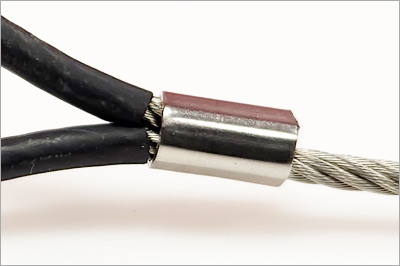

Crimp Sleeve Material
Cable crimp sleeves are most often made from 304 stainless steel, aluminum, brass, and zinc-plated copper. And as mentioned, these conventional cable fittings are used to produce among the most common mechanical cable assembly configurations. But, as important as the geometry of your crimp sleeve is the material from which it is made. After all, applying the correct fitting size to the cable does not account for increased production costs, or far worse, system failures that could be the result of the incorrect fitting material choice.
Stainless Steel Cable Crimp Sleeves
Mechanical cable larger in diameter than 3/8” is known as wire rope, whereas cable smaller than this is best known as cable or mechanical cable. Stainless steel cable crimp sleeves designed to accommodate a 3/8” diameter wire rope can be costly, for instance. Due to both the sheer price of the crimp sleeve material itself, as well as the industrial know-how required to produce the cable assembly, costs can soar on these large diameter fittings, and their accompanying production work. Although stainless steel may achieve the full-rated break strength required of the cable assembly, stainless steel is not only more expensive than suitable alternatives, like aluminum, it also oxidizes in saltwater environments.
Sometimes among the considerations when designing a cable assembly is its cosmetic appearance. If aesthetics count, stainless steel does nicely to achieve and maintain a silver finish throughout the length of the assembly’s lifespan, providing inhospitable conditions are not present.
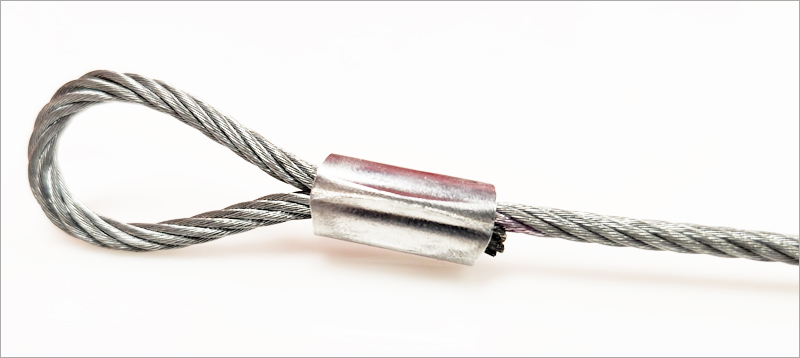

Aluminum & Zinc-Plated Copper Cable Crimp Sleeves
Also used in mid-sized and large diameter wire ropes and cables, aluminum crimp sleeves are an ideal alternative to stainless steel. Aluminum crimp sleeves are more cost-effective, lighter weight, and will not oxidize when introduced to humidity or saltwater conditions. Coming in ovular and figure-8 geometries, the application requirements of aluminum crimp sleeves may be used in scenarios interchangeably where zinc-plated copper crimp sleeves are found as well. The commonality between aluminum and copper is due to their comparable pliability. What’s more, the zinc-plating applied to copper crimp sleeves allows the material a similar resistance to humidity and other harsh environments.
Due to their atomic structure, the electrons in aluminum and copper crimp sleeves make the materials more malleable, allowing both to be pressed into shape more easily than other harder metals, like steel. Aluminum and copper’s ductility also makes them easier for production experts to form around cable or wire rope. So, not only do aluminum and zinc-plated copper crimp sleeves benefit from their chemical composition in hostile conditions, but their materials are also less costly than steel options.
Aluminum crimp sleeves possess a grayish, matte, and milky appearance. Where appearances matter, take caution in choosing this crimp sleeve type. While the aluminum will not change in color and overall appearance over time, this crimp sleeve fitting material is not especially dazzling to the eyes at any stage in its lifespan. On the contrary, the zinc-plating, clear chromate added to copper crimp sleeves provides these fittings a protective layer from external forces. This chemical process produces a chrome-like sheen over the copper crimp sleeve fitting, preventing the copper from suffering the unwanted patina-like aging commonly found on different and/or untreated copper surfaces.
Brass Cable Crimp Sleeves
Cosmetically attractive early, the copper and zinc naturally present in brass crimp sleeves will eventually cause the fitting to patina over time like untreated copper might. However, the benefits of brass crimp sleeves deal with how small these fittings are produced, and like aluminum, how soft they are with which to work. Sava produces brass crimp sleeves for cable as small as .006” and as large as .026” in diameter. Cylindrical in geometry, brass crimp sleeves are a cost-effective, easy-to-use, and efficient way to test the cable assembly in a lab environment. So, if an engineer is testing concepts, a hand tool easily allows an operator to affix brass crimp sleeves to cable. This simple approach to prototyping allows for quick results, and downstream, speedy design adjustments without prolonged lead times, large manufacturing equipment requirements, and costly data collection undertakings.
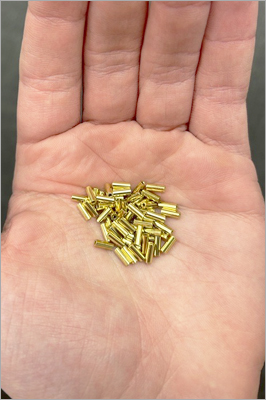

Get Cable Crimp Sleeves Right the First Time
Cable crimp sleeves are an elegant cable fitting that only pretends to be no big deal.
Though mainly used to form a loop, two loops, or combine two cables together, crimp sleeves are instrumental in almost any mechanical cable assembly where a cable is designed to be attached to mating components, like perhaps another looped cable assembly, or a stationary eye receptacle
But, as simple a job as cable crimp sleeves perform, and as ubiquitous as they are found, improperly applying a crimp sleeve fitting to cable will result in failure in the field.
For example, stainless steel crimp sleeves, though capable of achieving the assembly’s required cycle count or break strength, cannot be easily attached to cable using a hand tool. So, while the fitting may appear adequately pressed to the cable, proof-loading testing may fall short of the required factor of safety when hand tools are used. Brass crimp sleeves, on the other hand, are naturally more pliant, thus making a hand tool a perfectly acceptable way to press the crimp sleeve fitting to the cable.
As importantly, the geometric shape of the crimp sleeve fitting also informs the cable assembly’s potential to perform optimally in a system.
A figure-8 crimp sleeve, purely due to its geometry, allows the fitting to “hug” the cable almost entirely, which allows the cable and fitting to make more points of contact with one another than would be so in ovular crimp sleeve alternatives.
Get your crimp sleeves, and all your mechanical cable fittings questions answered and cable assembly needs met by asking our engineers precisely how to get it right the first time around. For over 50 years, Sava’s been producing the cable crimp sleeves and cable assemblies the world depends upon.

